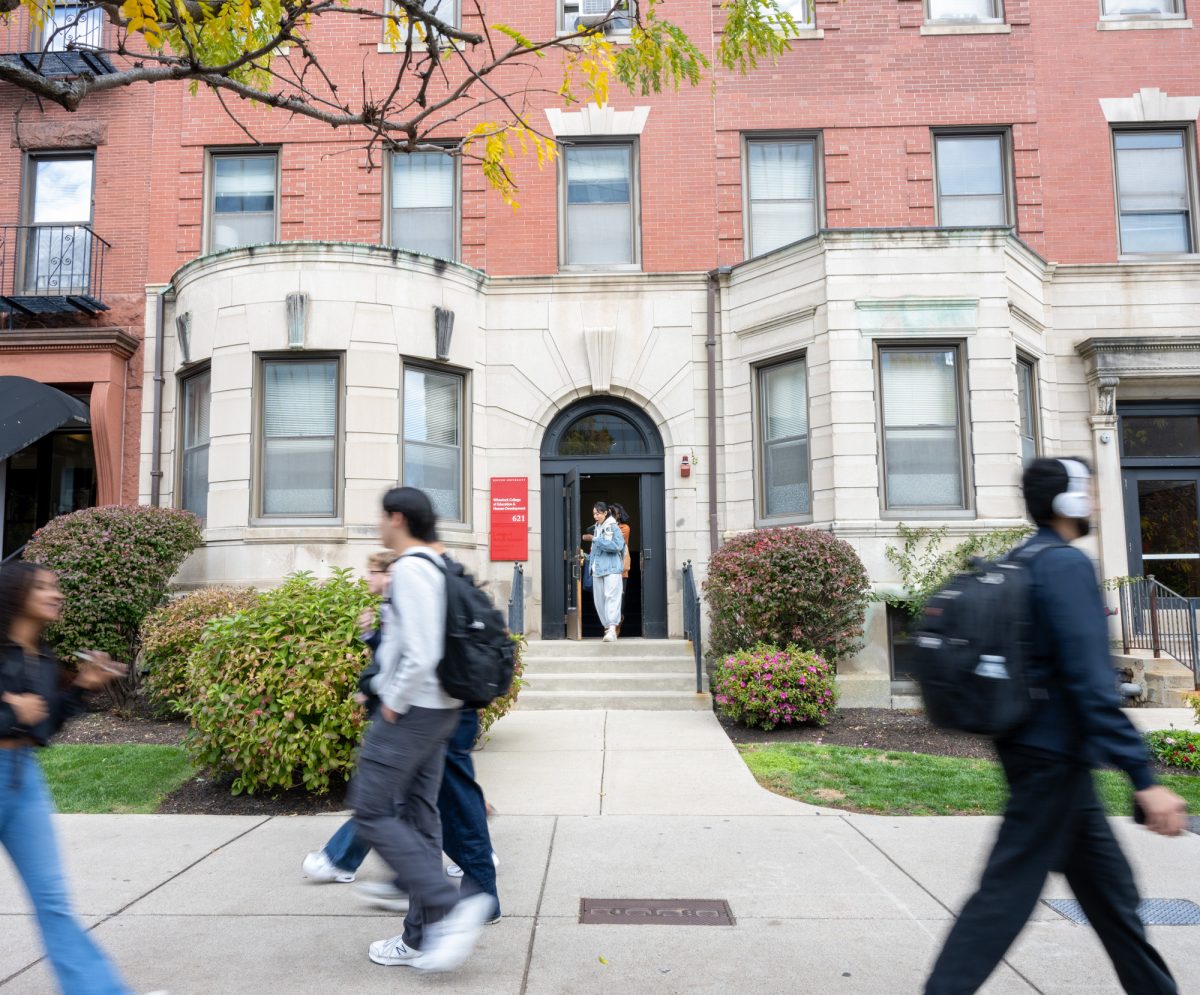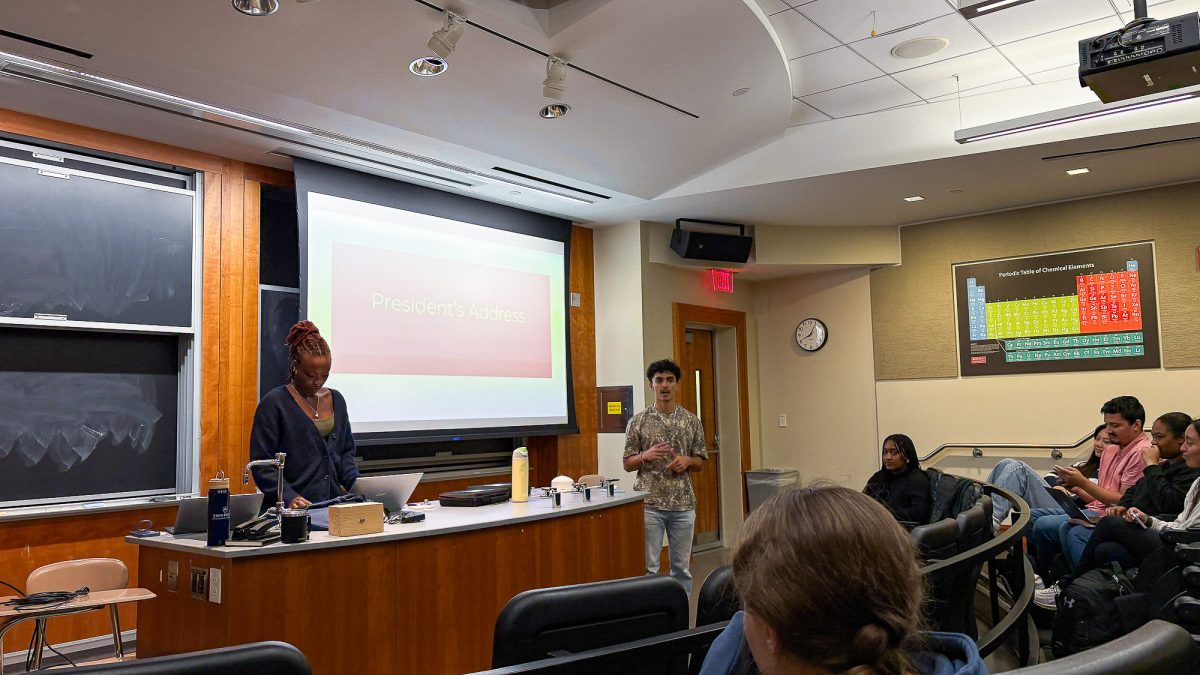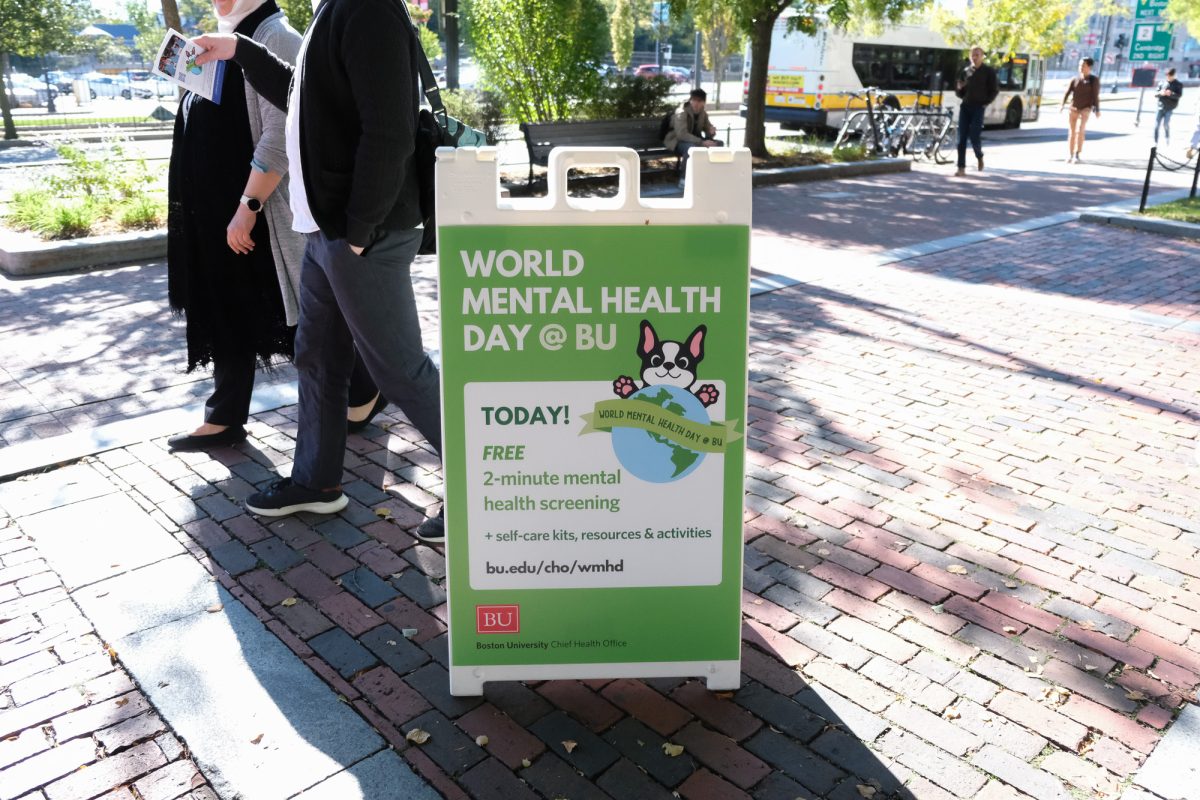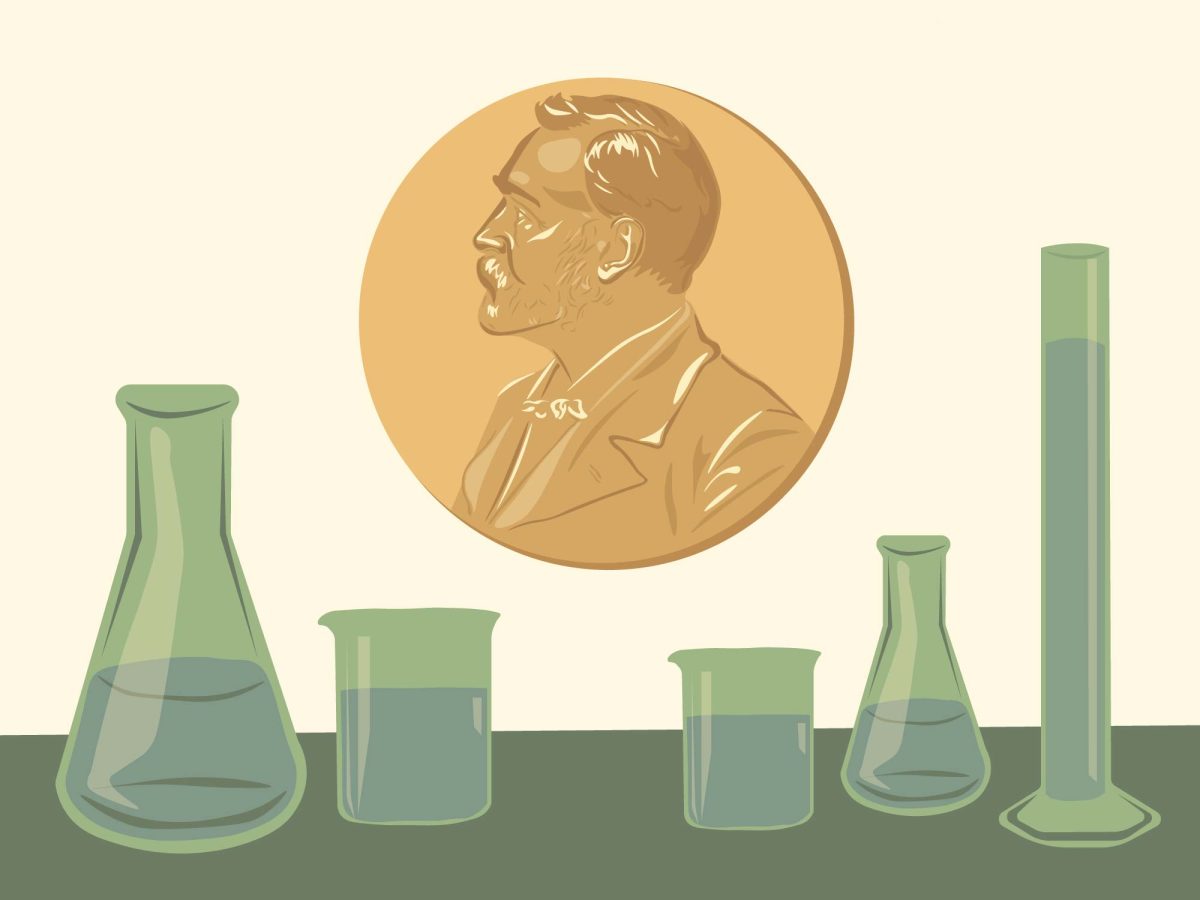Electronic cigarettes operate based on what seems to be a simple assumption: Tobacco products can cause serious health problems, so removing the tobacco and leaving the nicotine must be safer.
However, according to an ongoing study between researchers at Boston University and University of California-Los Angeles, the answer may not be this simple and straightforward. In fact, their research indicates that electronic cigarettes, often referred to as e-cigs, may still be unsafe.
“It’s incredibly successful marketing on the tobacco companies’ side, where by now, millions of Americans are using this product,” said Dr. Avrum Spira, a professor at Boston University School of Medicine and the principle investigator of BU’s contributions to the study. “They seem safer, but that’s where our research comes in.”
This research reveals a potentially darker side of a product that has been growing quickly in popularity. From 2008 to 2012, the net e-cigarette sales in the United States skyrocketed from approximately $20 million to $500 million, according to data from statisticbrain.com. Since then, they have surpassed $1 billion, according to an August story from Business Insider.
At the annual American Association for Cancer Research convention on April 6, the joint BU-UCLA team presented findings that reveal similar effects of both traditional smoking and electronic vapor intake.
The research has been a two-fold process. The team at UCLA first kicked off the investigation by collecting epithelial cells, the cells that line and protect organs, from non-smoking patients.
“We collected them during a procedure called bronchoscopy, where we insert a fibro-optic scope into the airway and brushed the cells that line that airway,” Spira, who is also a pulmonary and critical care physician at Boston Medical Center, said.
The cells were then mutated in order to simulate the more cancer-prone nature of a smoker’s epithelium.
“What that means is basically these were modified human lung cells,” said Teresa Wang, a fourth-year Ph.D. candidate and researcher in the Spira-Lenburg Lab at BUSM.
The cells were separated into cultures and exposed to either traditional cigarette (t-cig) smoke or e-cig vapor. The vapor and smoke administrations were given in four-hour durations over 10 days.
The UCLA researchers then observed the cultures for their ability to form something called the “anchorage-independence growth,” the behavior of cancer cells to spread abnormally. Both e-cig and t-cig exposures produced similar levels of this growth.
“The cells that were exposed to high concentrations of the electronic cigarette had a change in their behavior in that they were able to grow very quickly, almost looking cancer-like,” Spira said. “They had a very similar growth rate to when you take these very same cells and expose them to tobacco smoke. This was a very concerning observation.”
The team then extracted the RNA from both the smoke-exposed and vapor-exposed cells and sent it over to BU for gene profiling through microarray technology. This experiment once again produced similar results for both types: Data suggested that both e-cig and t-cig-treated RNA experienced similar gene expression at a certain level of nicotine intake, Wang said.
“In other words, electronic cigarettes induce activities in a number of genes that are similar to what regular tobacco smoke induces,” Spira said.
These similarities in gene expression behavior and cell population growth both add to the skepticism over e-cigs as a “safer” alternative to smoking and serve as incentives for continued investigation over the method, Spira said, though he was quick to caution that further examination is needed.
The joint team plans on pushing the study toward a more realistic scope by retrieving epithelial cells from already-smoking patients who switch over to e-cigs. The team is currently recruiting people in the Boston and Los Angeles areas for this next stage of research.
Michael Siegel, a professor of community health sciences at BU School of Public Health, said e-cigarettes also satisfy desires other than that for nicotine.
“A lot of the people who are addicted to smoking are not just addicted to the nicotine,” Siegel said. “They’re addicted to all the aspects of smoking behavior — everything from the hand motions, to the throat sensations to the tactile feeling of the cigarette, to the social behaviors. In that sense, it’s kind of a holistic approach.”
Spira said he believes continuation of the study is a necessary precursor to future e-cig usage and advancement.
“The major take-home message, I think, is that it’s very early days in terms of our understanding of the health impact of these newer types of tobacco products, specifically electronic cigarettes,” he said. “A lot more studies like these are needed before we can feel that these products are, in fact, safe.”






















































































































harleyrider1778 • May 4, 2014 at 10:43 pm
Judge doesnt accept statistical studies as proof of LC causation!
It was McTear V Imperial Tobacco. Here is the URL for both my summary and the Judge’s ‘opinion’ (aka ‘decision’):
http://boltonsmokersclub.wordpress.com/the-mctear-case-the-analysis/
(2.14) Prof Sir Richard Doll, Mr Gareth Davies (CEO of ITL). Prof James Friend and
Prof Gerad Hastings gave oral evidence at a meeting of the Health Committee in
2000. This event was brought up during the present action as putative evidence that
ITL had admitted that smoking caused various diseases. Although this section is quite
long and detailed, I think that we can miss it out. Essentially, for various reasons, Doll
said that ITL admitted it, but Davies said that ITL had only agreed that smoking might
cause diseases, but ITL did not know. ITL did not contest the public health messages.
(2.62) ITL then had the chance to tell the Judge about what it did when the suspicion
arose of a connection between lung cancer and smoking. Researchers had attempted
to cause lung cancer in animals from tobacco smoke, without success. It was right,
therefore, for ITL to ‘withhold judgement’ as to whether or not tobacco smoke caused
lung cancer.
[9.10] In any event, the pursuer has failed to prove individual causation.
Epidemiology cannot be used to establish causation in any individual case, and the
use of statistics applicable to the general population to determine the likelihood of
causation in an individual is fallacious. Given that there are possible causes of lung
cancer other than cigarette smoking, and given that lung cancer can occur in a nonsmoker,
it is not possible to determine in any individual case whether but for an
individual’s cigarette smoking he probably would not have contracted lung cancer
(paras.[6.172] to [6.185]).
[9.11] In any event there was no lack of reasonable care on the part of ITL at any
point at which Mr McTear consumed their products, and the pursuer’s negligence
case fails. There is no breach of a duty of care on the part of a manufacturer, if a
consumer of the manufacturer’s product is harmed by the product, but the consumer
knew of the product’s potential for causing harm prior to consumption of it. The
individual is well enough served if he is given such information as a normally
intelligent person would include in his assessment of how he wishes to conduct his
life, thus putting him in the position of making an informed choice (paras.[7.167] to
[7.181]).
harleyrider1778 • May 4, 2014 at 10:43 pm
JOINT STATEMENT ON THE RE-ASSESSMENT OF THE TOXICOLOGICAL TESTING OF TOBACCO PRODUCTS”
7 October, the COT meeting on 26 October and the COC meeting on 18
November 2004.
http://cot.food.gov.uk/pdfs/cotstatementtobacco0409
“5. The Committees commented that tobacco smoke was a highly complex chemical mixture and that the causative agents for smoke induced diseases (such as cardiovascular disease, cancer, effects on reproduction and on offspring) was unknown. The mechanisms by which tobacco induced adverse effects were not established. The best information related to tobacco smoke – induced lung cancer, but even in this instance a detailed mechanism was not available. The Committees therefore agreed that on the basis of current knowledge it would be very difficult to identify a toxicological testing strategy or a biomonitoring approach for use in volunteer studies with smokers where the end-points determined or biomarkers measured were predictive of the overall burden of tobacco-induced adverse disease.”
John Davidson • May 3, 2014 at 8:26 am
This pretty well destroys the Myth of second hand smoke:
http://vitals.nbcnews.com/_news/2013/01/28/16741714-lungs-from-pack-a-day-smokers-safe-for-transplant-study-finds?lite
Lungs from pack-a-day smokers safe for transplant, study finds.
By JoNel Aleccia, Staff Writer, NBC News.
Using lung transplants from heavy smokers may sound like a cruel joke, but a new study finds that organs taken from people who puffed a pack a day for more than 20 years are likely safe.
What’s more, the analysis of lung transplant data from the U.S. between 2005 and 2011 confirms what transplant experts say they already know: For some patients on a crowded organ waiting list, lungs from smokers are better than none.
“I think people are grateful just to have a shot at getting lungs,” said Dr. Sharven Taghavi, a cardiovascular surgical resident at Temple University Hospital in Philadelphia, who led the new study………………………
Ive done the math here and this is how it works out with second ahnd smoke and people inhaling it!
The 16 cities study conducted by the U.S. DEPT OF ENERGY and later by Oakridge National laboratories discovered:
Cigarette smoke, bartenders annual exposure to smoke rises, at most, to the equivalent of 6 cigarettes/year.
146,000 CIGARETTES SMOKED IN 20 YEARS AT 1 PACK A DAY.
A bartender would have to work in second hand smoke for 2433 years to get an equivalent dose.
Then the average non-smoker in a ventilated restaurant for an hour would have to go back and forth each day for 119,000 years to get an equivalent 20 years of smoking a pack a day! Pretty well impossible ehh!
John Davidson • May 3, 2014 at 8:26 am
JOINT STATEMENT ON THE RE-ASSESSMENT OF THE TOXICOLOGICAL TESTING OF TOBACCO PRODUCTS”
7 October, the COT meeting on 26 October and the COC meeting on 18
November 2004.
http://cot.food.gov.uk/pdfs/cotstatementtobacco0409
“5. The Committees commented that tobacco smoke was a highly complex chemical mixture and that the causative agents for smoke induced diseases (such as cardiovascular disease, cancer, effects on reproduction and on offspring) was unknown. The mechanisms by which tobacco induced adverse effects were not established. The best information related to tobacco smoke – induced lung cancer, but even in this instance a detailed mechanism was not available. The Committees therefore agreed that on the basis of current knowledge it would be very difficult to identify a toxicological testing strategy or a biomonitoring approach for use in volunteer studies with smokers where the end-points determined or biomarkers measured were predictive of the overall burden of tobacco-induced adverse disease.”
In other words … our first hand smoke theory is so lame we can’t even design a bogus lab experiment to prove it. In fact … we don’t even know how tobacco does all of the magical things we claim it does.
The greatest threat to the second hand theory is the weakness of the first hand theory.
Allan Mitchell • May 1, 2014 at 10:18 pm
As a smoker for more than 20 years, I made the switch and electronic cigarettes have changed my life. I am no longer inhaling tar nor the 4,000 other chemicals found in traditional tobacco! I can’t claim they are completely safe however it is more than clear that they are definitely “safer”! Studies made in a lab with a petrie dish are in no way conclusive to even warrant publication! This is not even a controlled study using the scientific method. They do not know enough about the industry to be able to complete a fair study. What they do not realize is that the nicotine based oils used in e-cigarettes are compounded differently, depending on their source. If the oils contain carcinogens then it is feasible that they can find some way to replicate cancer growth cells. You can probably see similar results with someone who constantly eats very well done (burned) red meat! I can’t wait to see the full study and methods / controls used to arrive at this conclusion.
noway • Apr 29, 2014 at 7:32 pm
So they are amazed that cells they themselves mutated to make them cancerous, grew cancer faster by having a stimulant pumped into them? I could have told you that for free.